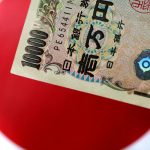
LONDON (Reuters) -The yen whipsawed in its most volatile trading session in months on Friday, after the Bank of Japan made its yield curve control policy more flexible, which investors took as a step towards a eventual shift in its massive stimulus programme.
Chopping and changing direction as traders digested the BOJ decision, the yen strengthened by as much as 1.2% to as much as 138.05 per dollar before weakening 1% on the day to 141.20. The Japanese currency was last at 139.76, down 0.2% against the dollar.
The yen has not seen such a large swing between intraday highs and lows against the dollar since late April. It also waxed and waned against other currencies, eventually trading lower on the day against the euro and sterling, falling 0.1% and 0.3% against them, respectively.
The BOJ ended a two-day policy meeting on Friday with a decision to keep its short-term interest rate target at -0.1% and that for the 10-year government bond yield around 0%.
But at the same time, the central bank said it would offer to buy 10-year Japanese government bonds (JGB) at 1.0% in fixed-rate operations, instead of the previous rate of 0.5%.
“They’ve put a floor under the yen, or a cap on dollar/yen, between MOF and the Bank of Japan reasonably effectively. But they’ve not done anything to discourage you from believing that the move from 137-142 – whatever we think the current range is – back towards 130 is going to happen quickly,” Societe Generale (OTC:SCGLY) currency strategist Kit Juckes said.
He said that even such a drop would still be a function of bond yields falling elsewhere in the world, rather than rising in Japan.
“You couldn’t mistake Mr Ueda for a hawk by any stretch of the imagination,” he said.
Since introducing YCC in 2016, the BOJ had little trouble controlling bond yields when inflation remained well below its target. That changed last year, when soaring commodity prices pushed inflation above the 2% target and gave investors reason to attack the yield cap.
“The commitment to maintain negative rates should help to dampen speculation over rate hikes through the rest of this year helping to dampen upward pressure on yields and the yen,” Lee Hardman, a strategist at MUFG, said.
Joey Chew, head of Asia FX research at HSBC, said it seemed unlikely that there would be an end to the volatility of the dollar/yen pair any time soon.
“With short JPY speculative positions being cut dramatically recently, the market could be prone to a squeeze,” he said.
Investors are currently holding a short position in the yen worth $8.13 billion, but that’s down from a 14-month high the previous week, after speculators delivered the biggest cut to those bearish bets since March.
CENTRAL BANK WEEK
Earlier this week, the U.S. Federal Reserve and the European Central Bank hiked policy rates by 25 basis point, as expected.
However, the ECB raised the possibility of a pause in September as inflation pressures show tentative signs of easing and recession worries mount.
“There is the possibility of a hike (next time). There is the possibility of a pause. It’s a decisive maybe,” ECB President Christine Lagarde said on Thursday.
The euro eased 0.16% to $1.0958, after having fallen 1% the previous day. It was heading for a weekly drop of 1.5%, its largest weekly fall since mid-May.
On Wednesday, the Fed left the door open to more rate hikes, though Fed Chair Jerome Powell gave few hints about the September meeting.
“Both central banks have retained a hawkish bias, but the Fed looks more likely to hike again while the data is telling us the ECB is probably done,” said Rodrigo Catril, senior currency strategist at National Australia Bank (OTC:NABZY).
The Fed is having to balance its fight against inflation with an economy that is showing signs of slowing, but is still growing faster than expected and a robust labour market.
To read the full article, Click Here

